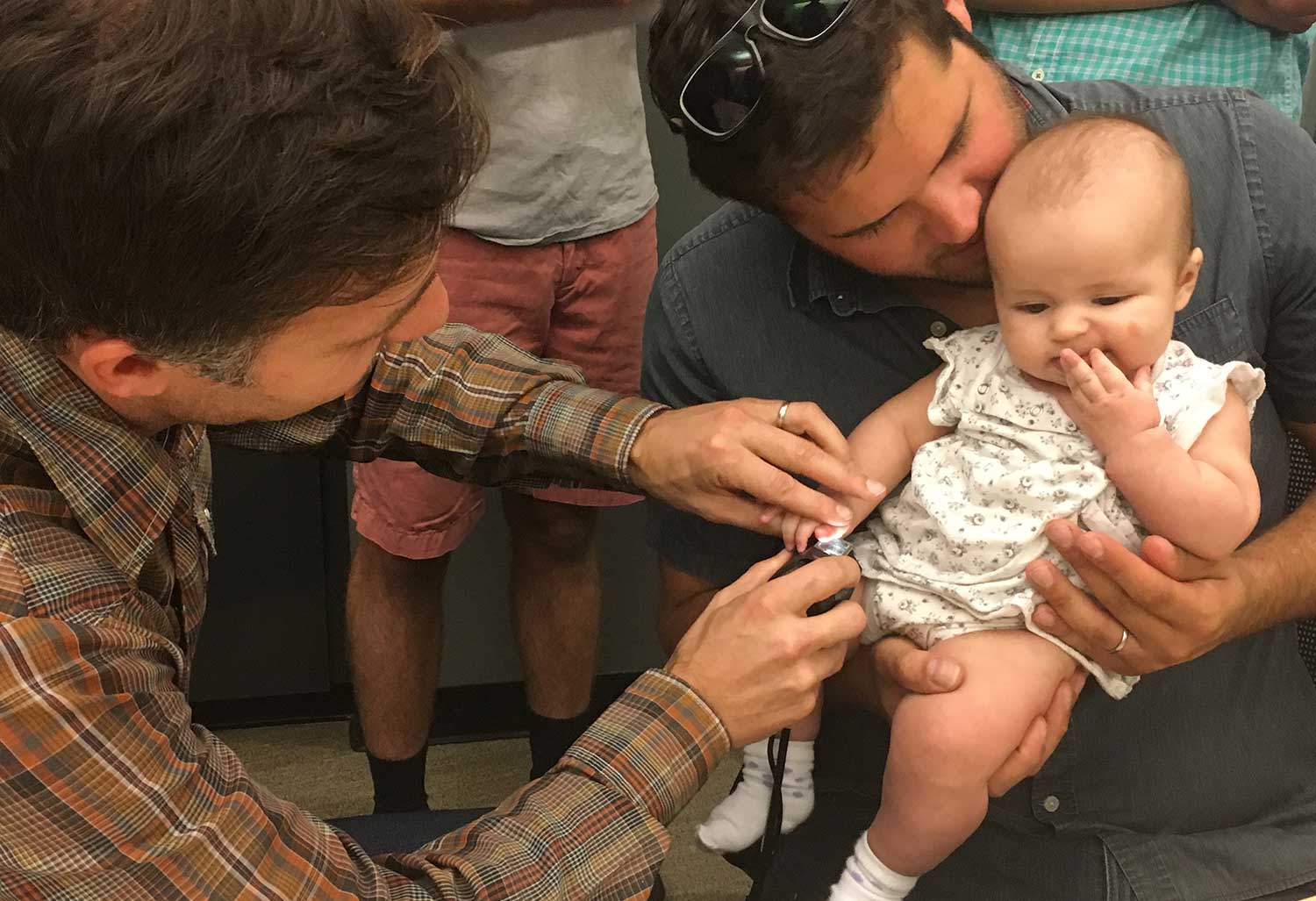Researchers Receive $2.4 Million from Gates Foundation for Infant Vaccination Identification
Published Date
By:
- Jeff Gardner
Share This:
Article Content

An infant has her fingerprint scanned with a new biometric identification device that is designed to make children’s vaccinations more efficient and more effective.
The Bill & Melinda Gates Foundation has awarded an additional $2.4 million to researchers at the University of California San Diego Qualcomm Institute to develop biometric identification suitable for infants and children in the developing world.
The project is expected to make children’s vaccinations more efficient and more effective by removing reliance on manual identification and recordkeeping, epitomized by the ubiquitous yellow vaccination card. In concert with other Gates Foundation initiatives to improve vaccinations globally, the combined effort could save the lives of 1.5 million children younger than five, every year.
“Imagine you’re a mom in Africa or India and you live 100 miles away from a healthcare center,” says project lead Eliah Aronoff-Spencer, a professor and expert in infectious diseases at the UC San Diego School of Medicine, an affiliate of the Qualcomm Institute (QI) and a principal investigator on the project. “Once a week a local clinic offers vaccinations. If that clinic can currently see 300 people per day, and you’re number 301, and your baby needs her measles shot, then she is needlessly at risk, because measles is a vaccine-preventable illness. If we can help that clinic see 350 or 400 people instead, then that’s a lot of parents who won’t have to worry.”
The team is developing new technologies to identify infants from birth to six months. “Even though we want to support healthcare for a person’s whole life, in the first few months of life the skin is so deformable and the finger so difficult to access that it defines a critical window challenging both the technology and the interactions,” explains QI project scientist Deborah Forster. “The fingerprints are smooshy and the kids wiggly, and all the things that have to come together to get clear fingerprints are moving targets.”
Their newest device has demonstrated promising results, and will eventually connect with laptops or tablets to create a privacy-protected database of immunization records more quickly searched and less easily lost than the current system. This is all being developed by an interdisciplinary team of scientists, engineers, medical practitioners and designers drawn broadly from diverse parts of campus; the UC San Diego School of Medicine, the Jacobs School of Engineering, the School of Global Policy Studies, the Rady School of Management; all coming together at UC San Diego’s new Design Lab to focus on human-centered design and multidisciplinary teamwork.
The grant is the second from the Bill & Melinda Gates Foundation for this team; $500,000 was previously awarded for a proof-of-approach effort.
“Other solutions have tried applying devices and interactions developed for adults to this problem,” explains Michael Meyer, design lead and Lecturer at the Rady School of Management, “but that’s uncomfortable for the child and may be culturally unacceptable for the parent. We re-conceptualized the problem, both improving upon the technology, and designing the interaction to work with infants’ natural behaviors so that the technology doesn’t have to work as hard to be effective -- a ‘design thinking’ approach.”
“In under a year,” adds Aronoff-Spencer, “the proof-of-approach device worked well enough to move to phase two: development of a system to deploy worldwide.”
Because technology development is a key element of the effort, the lead prototypes are pursuing multiple techniques in parallel, ranging from optical to ultrasonic scanning. Contact scanners gently press a glass imaging plate alongside an infant’s finger to see their print, while non-contact scanners examine the fingerprint from a distance. Once the print is scanned, it is digitally enhanced and the features extracted, both steps employing algorithms developed at UC San Diego. These features are then compared to a database to yield a positive match and combined with biographical information display the child’s health information and immunization record.
The device is targeted to cost less than $100, and will be sufficiently robust to work in remote field hospital locations. “It has been tested locally with kids and worked well, but brought out opportunities for improvements, and we’re exploring those,” Aronoff-Spencer said. “We can’t design new infants so we have to design new software and new hardware. From day one we knew we had to re-think this problem from the ground up.”
Share This:
Stay in the Know
Keep up with all the latest from UC San Diego. Subscribe to the newsletter today.



